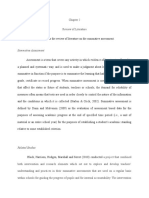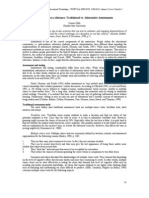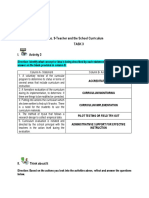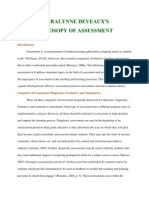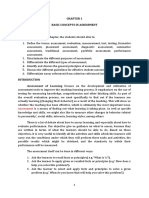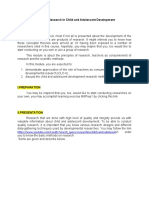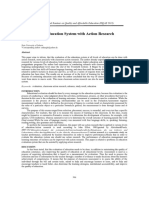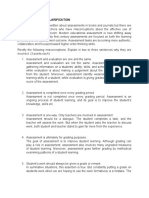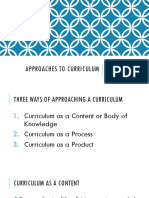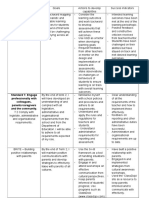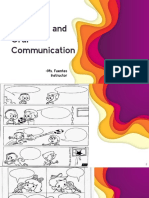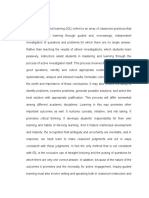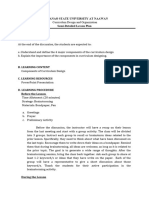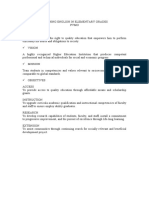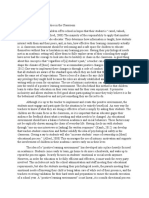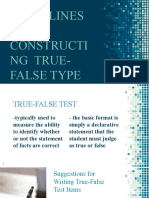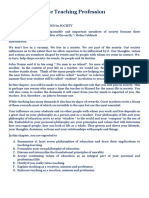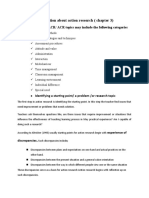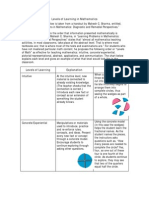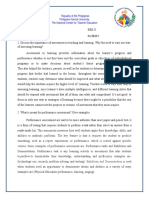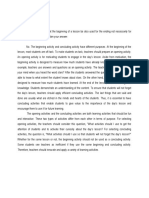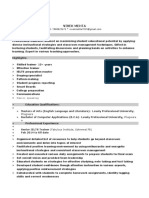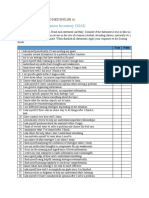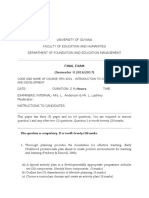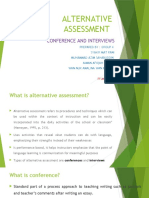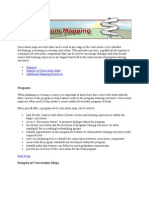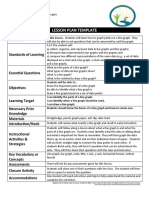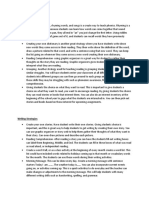100% found this document useful (2 votes)
752 views4 pagesEducator's Guide to Student Assessment
The document discusses various types of assessment and emphasizes self-assessment. It states that self-assessment is the most effective way for students to evaluate their own progress because it encourages independent learning and helps students take ownership of their education. When students assess themselves, they can critically examine their strengths and weaknesses, set personal learning goals, and be accountable for improving their skills and developing competencies. Overall, the document advocates for the use of self-assessment in teaching because it motivates students to take control of and responsibility for their own learning.
Uploaded by
Rhea Mae PableoCopyright
© © All Rights Reserved
We take content rights seriously. If you suspect this is your content, claim it here.
Available Formats
Download as DOCX, PDF, TXT or read online on Scribd
100% found this document useful (2 votes)
752 views4 pagesEducator's Guide to Student Assessment
The document discusses various types of assessment and emphasizes self-assessment. It states that self-assessment is the most effective way for students to evaluate their own progress because it encourages independent learning and helps students take ownership of their education. When students assess themselves, they can critically examine their strengths and weaknesses, set personal learning goals, and be accountable for improving their skills and developing competencies. Overall, the document advocates for the use of self-assessment in teaching because it motivates students to take control of and responsibility for their own learning.
Uploaded by
Rhea Mae PableoCopyright
© © All Rights Reserved
We take content rights seriously. If you suspect this is your content, claim it here.
Available Formats
Download as DOCX, PDF, TXT or read online on Scribd
/ 4


